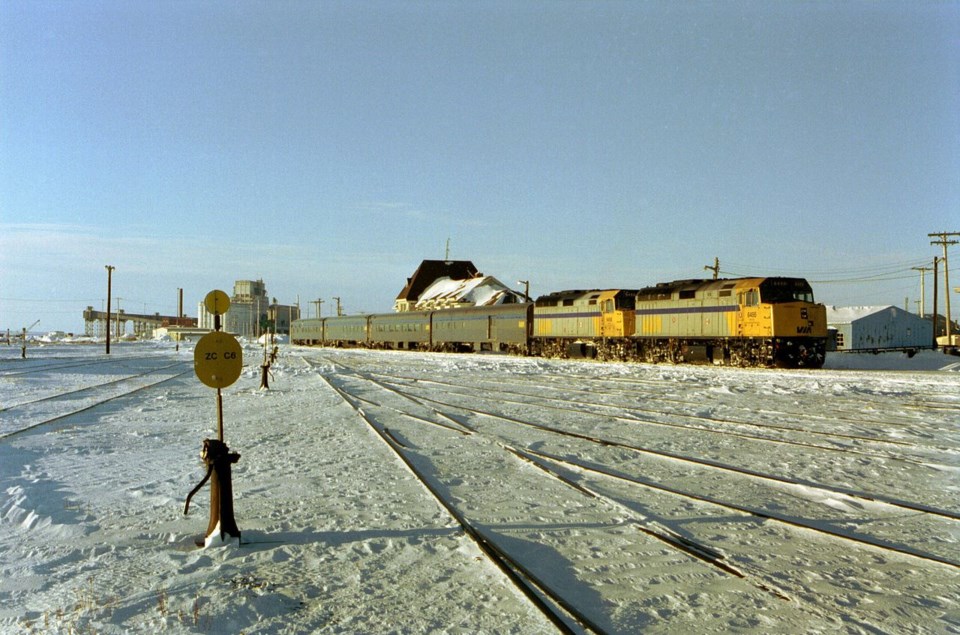Critically important infrastructure is too often poorly maintained or lacking in sufficient future planning. Delaying maintenance is a misplaced budgetary economy. Insufficient planning is symptomatic of a lack of realistic forethought and both represent a much greater cost than is often acknowledged.
The railway to the northern port town of Churchill, Man., is a prime example. The tracks had not been maintained for many years. Spring flooding in 2017 left the route impassable, cutting off the only land link to the town, until new ownership took over in the fall of 2018. Repairs only took about 35 days, costing far less than the previous owners, Omnitrax, quoted.
The cost of no rail access to Churchill was huge. It cost approximately $600,000 to ship to Montreal the Via Rail locomotives and five rail cars stranded in the town after the flooding. Total losses have yet to be fully determined. Many are incalculable, including personal costs and those to small business all along the line.
Loss in tourism and access to communities farther north, as well as the potential ongoing losses of businesses in Manitoba must also be calculated. Some of these can be estimated now; others will be unknown for some time. We trust the rail line’s new owner will maintain it and we anticipate the long-needed port repairs and upgrades to accommodate predicted longer shipping seasons.
New technologies likewise require critical infrastructure planning and implementation, such as charging stations for electric vehicles and sensors for autonomous ones.
Some Canadian centres, such as Victoria, with its 142 charging stations, are well equipped. Others — such as Winnipeg, which only has 34 — lag behind, curtailing the uptake of electric cars and renewable energies.
Road sensors and lane lines are essential for autonomous vehicles. Lines, however, are often snow-covered for months. What are the alternatives? Are research centres, such as Ford and Honda’s in Thompson, Man., looking to these future needs? Research demonstrates electric car batteries have a 40 per cent reduced effectiveness in sub-zero temperatures. That reality must be improved for those living in winter climates to move away from gas-fuelled vehicles.
Urban-rural divides must be addressed. Many parts of rural and Northern sa���ʴ�ý, still dealing with slow or non-existent digital access, do not benefit from new technologies. University of Manitoba distinguished professor emeritus Lotfollah Shafai said Amazon or eBay could have been launched in sa���ʴ�ý’s North but they “needed a good connectivity to the internet . . . and [the North] deserves it like anyone else in the country.” Is sa���ʴ�ý’s Infrastructure Bank really geared to smart infrastructure and these collective needs?
sa���ʴ�ý’s cultural infrastructure must also be attended to. Many facilities were built more than 50 years ago for sa���ʴ�ý’s centennial. Some large institutions have had subsequent additions or upgrades. Others have newer buildings. But across sa���ʴ�ý, many theatres, galleries and museums preserving sa���ʴ�ý’s cultural public trust languish despite promises by various governments. In some cases, funding promised with certain conditions has not been forthcoming when the conditions have been met.
The Art Gallery of Greater Victoria is one example. The federal government promised $7 million to upgrade its current site if the British Columbia government committed funding, and when an agreed amount was raised from the private sector. Both conditions were met.
However, the gallery was then told the Cultural Spaces program’s monies, slated to provide federal funding, were transferred to the new Creative Hubs program. Confusing conundrums followed as government websites confirmed the continuation of the Cultural Spaces program. The new realities meant different criteria, rules, guidelines and competition with swimming pools and other civic needs, not kindred cultural institutions.
That gallery now must decide, despite reaching its challenging targets, to raise more money to deal with the lack of federal funding and escalating costs, or to shelve the entire project, its need determined in the 1990s, and return donations to donors. Each scenario penalizes the organization, compromising community relationships and public responsibilities. Is that how sa���ʴ�ý preserves and engages with its cultural heritage past and present?
We must maintain and upgrade sa���ʴ�ý’s infrastructure and do future planning. Otherwise, our communities, economy and health will be sorely compromised, rendering society unable to serve sa���ʴ�ý and Canadians or to compete internationally.
Patricia Bovey is an independent senator for Manitoba.



